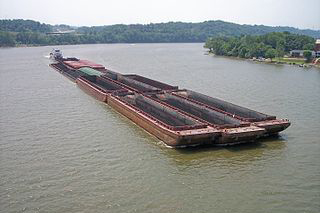(Bloomberg) -- U.S. coal giant Peabody Energy Corp. filed for bankruptcy on Wednesday, the most powerful convulsion yet in an industry that’s enduring the worst slump in decades.
The company filed Chapter 11 petitions for most of its U.S. entities in federal court in St. Louis, listing $10.1 billion in debt. All of Peabody’s mines and offices are continuing to operate and are expected to continue doing so for the duration of the process, according to a statement.
Founded in 1883 by 24-year-old Francis S. Peabody with $100, a wagon and two mules, the miner is now the largest private-sector coal company in the world. It joins at least four other coal companies that have sought bankruptcy during the slump — a result of tougher environmental policies, a flood of cheap natural gas and a global glut of metallurgical coal that’s dragged prices for steelmaking component to the lowest in more than 10 years.
“The outlook for coal players remains bleak,” said Sandra Chow, a Singapore-based credit analyst who tracks coal producers at CreditSights Inc. “Any recovery remains a long way from here.”
Industry Pain
The price of metallurgical coal has tumbled about 75% since its 2011 peak. That’s been particularly painful for Peabody, which spent $4 billion in 2011 to acquire Australia’s MacArthur Coal Ltd. to expand its sales of the steelmaking component. No Australian entities are included in the filings, and Australian operations are continuing as usual, according to the statement.
“It wasn’t a question of whether Peabody was going to file, it was a question of when and would they include the Australian assets,” Jeremy Sussman, a New York-based analyst for Clarksons Platou Securities Inc., said by phone Wednesday. He called the MacArthur acquisition “ill fated,” but also said most of Peabody’s mines make money, unlike those belonging to other bankrupt miners, such as Walter Energy Inc. or Alpha Natural Resources Inc.
Still Producing
“I very much expect them to go through a restructuring where the vast majority of assets that are producing today will produce for the foreseeable future,” Sussman said. “It’s much more of a balance sheet restructuring than anything else.”
Powder River Basin coal, produced from one of Peabody’s largest mines, traded Tuesday at $9.05 a ton, the lowest price in more than three years and 16% below the five-year average, according to data compiled by Bloomberg.
“The factors affecting the global coal industry in recent years have been unprecedented,” Peabody said in the statement, but also cited estimates that demand will stabilize. “Coal currently fuels approximately 40% of global electricity and is expected to be an essential source of global electricity generation and steel making for many decades to come.”
Bright Spots
The U.S. will continue to use coal, which generated about 28% of the country’s electricity in December, according to the Energy Information Administration. Demand for coal used in power plants and for making steel should remain weak through 2016, but India and Southeast Asia will be bright spots, said Bloomberg Intelligence analyst Andrew Cosgrove.
“This isn’t a death knell for coal. It’s the pains of a shrinking industry,” Cosgrove said.
U.S. coal production peaked in 2008, at 1.17 billion metric tons. In recent years, it’s plunged and may fall to 752.5 million in 2016, the Energy Information Administration projected in its monthly Short-Term Energy Outlook released Tuesday.
Job Cuts
Last year Peabody began cutting jobs and looking to sell assets. A planned sale of its New Mexico and Colorado assets was terminated after the buyer was unable to complete the transaction, according to Wednesday’s statement.
The company listed debt totaling $10.1 billion and assets of $11 billion in its court filing. To help fund operations during bankruptcy, Peabody said it has agreed to $800 million in financing, arranged by Citigroup Inc. The loan, in which a number of the company’s secured lenders and unsecured noteholders are participating, would require court approval.
Big Creditors
Peabody’s list of unsecured creditors includes holders of several groups of notes, the largest being $1.56 billion in 6% notes due 2018. The Office of Natural Resources Revenue, which is responsible for mineral leases, has a $249.4 million claim. The company also listed an $11.7 million claim related to retiree obligations for Patriot Coal Corp., which Peabody spun off almost a decade ago.
The bankruptcy leaves uncertainty around Peabody’s $1.47 billion in environmental liabilities. Under a federal law enacted in 1977, mining companies must post surety bonds or other collateral that cover future mine cleanup costs unless their balance sheets are strong enough to qualify for an exemption known as "self-bonding."
Self-bonding “will probably be one of the bigger fights in bankruptcy,” said Sussman, the Clarksons Platou analyst. “Too early to tell the outcome.”
‘Clean Coal’
Peabody, which boasts sustainable mining practices and “clean coal,” says it has restored thousands of acres of mined lands over its long history.
“The company sees its land restoration as an essential part of the mining process,” it said in the statement Wednesday. “Peabody intends to continue to work with the applicable state governments and federal agencies to meet its reclamation obligations.”
Peabody grew quickly after its humble beginnings. The 133-year-old company listed on the New York Stock Exchange in 1949 and went through many corporate incarnations. It spun off operations in Appalachia and the Illinois Basin as Patriot Coal in 2007. Patriot filed for bankruptcy in 2012 and again in 2015, joining Alpha, Walter Arch Coal Inc. and James River Coal Co.
The case is In re Peabody Energy Corp., 16-42529, U.S. Bankruptcy Court, Eastern District of Missouri (St. Louis).





